Initial Configuration


The neutron star obeys a polytropic equation of state, P = Kρ0 Γ, at t = 0. It is evolved according to the adiabatic evolution law, P = (Γ-1)ρ0ε, where P is the pressure, K is the polytropic gas constant, ε is the internal specific energy, Γ is the adiabatic index, and ρ0 the rest-mass density. We chose Γ = 2 to mimic stiff nuclear matter. This star is irrotational (nonspinning) and in a quasiequilibrium circular orbit.
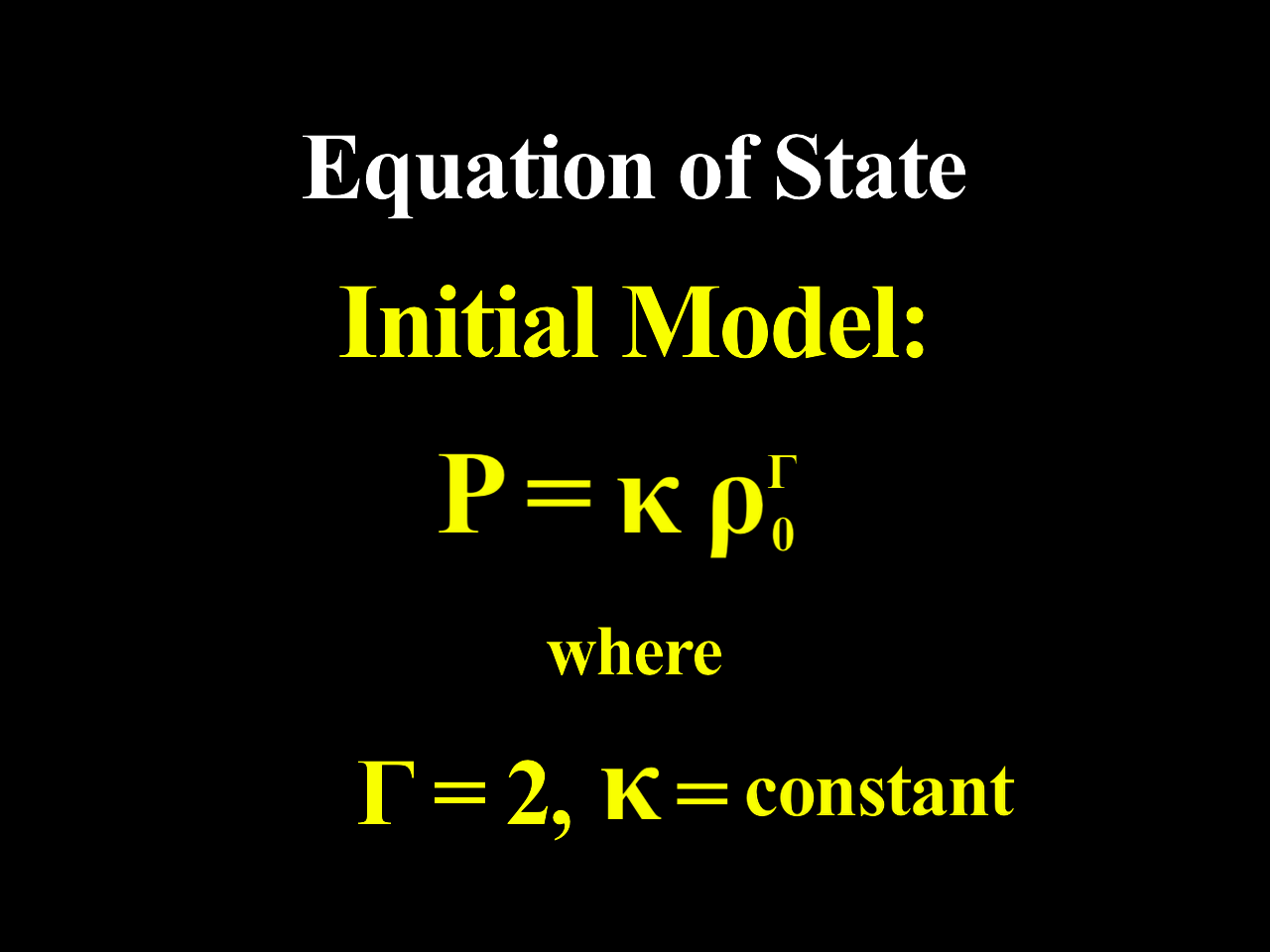 |
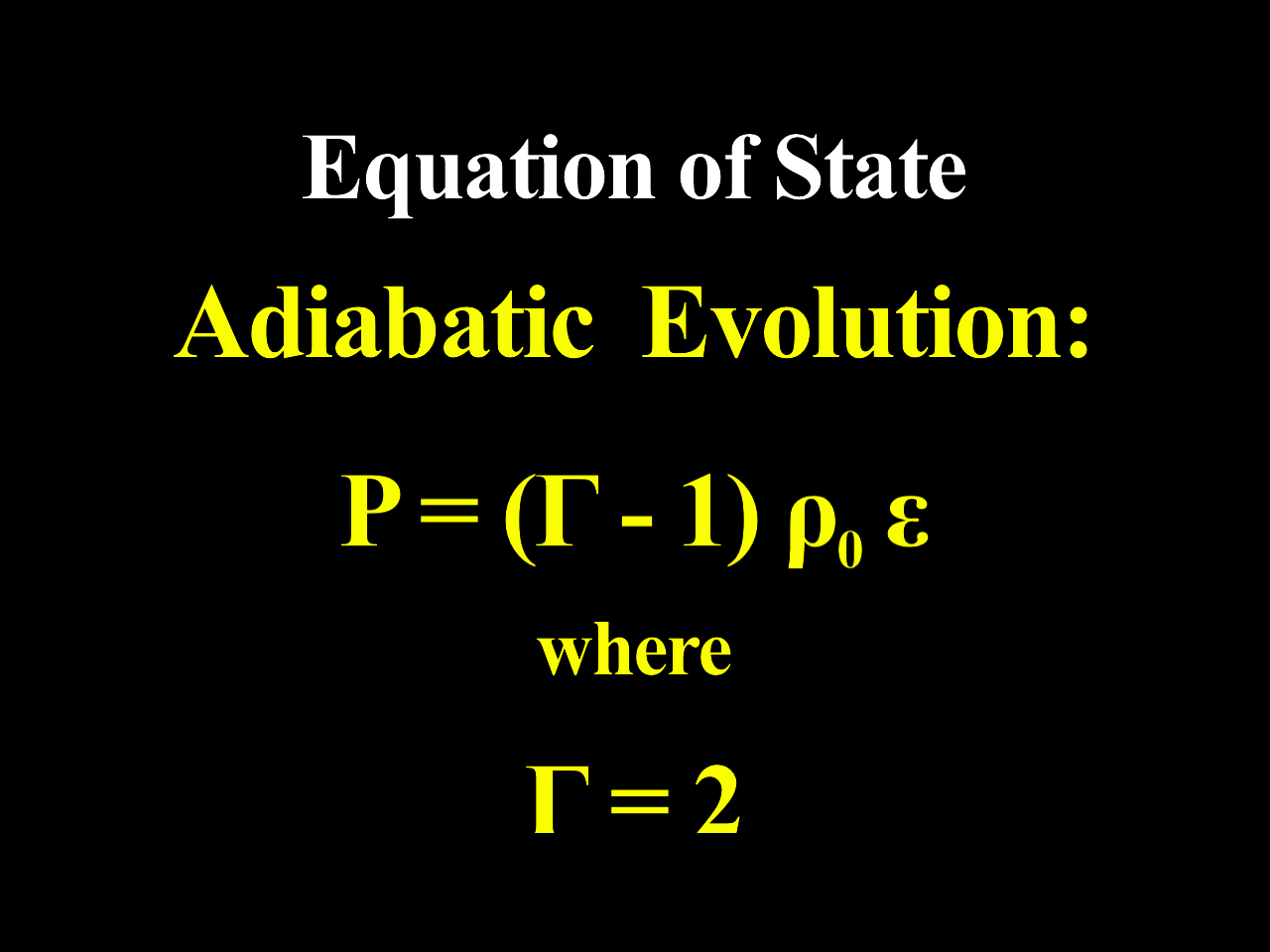 |
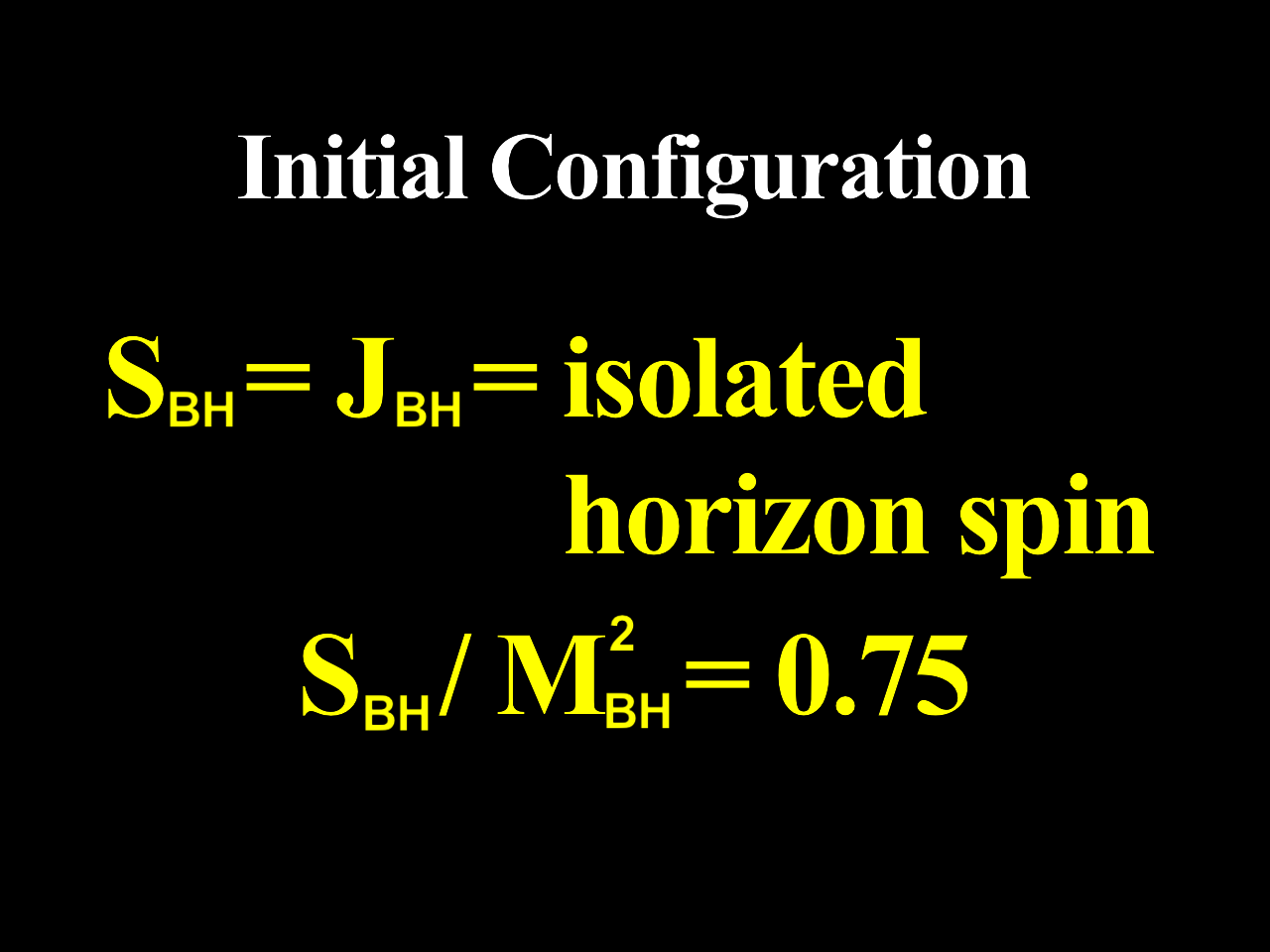 |
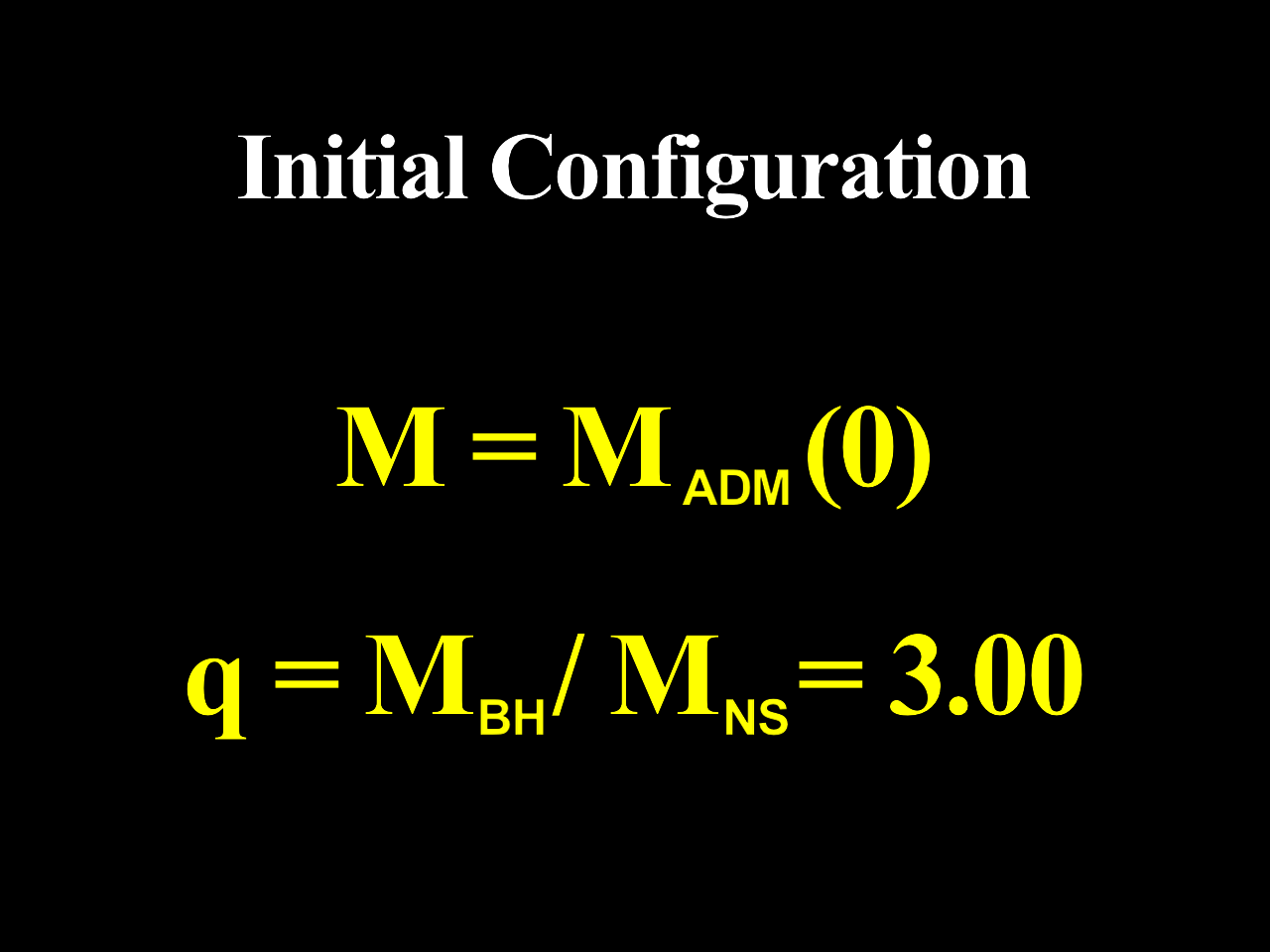 |
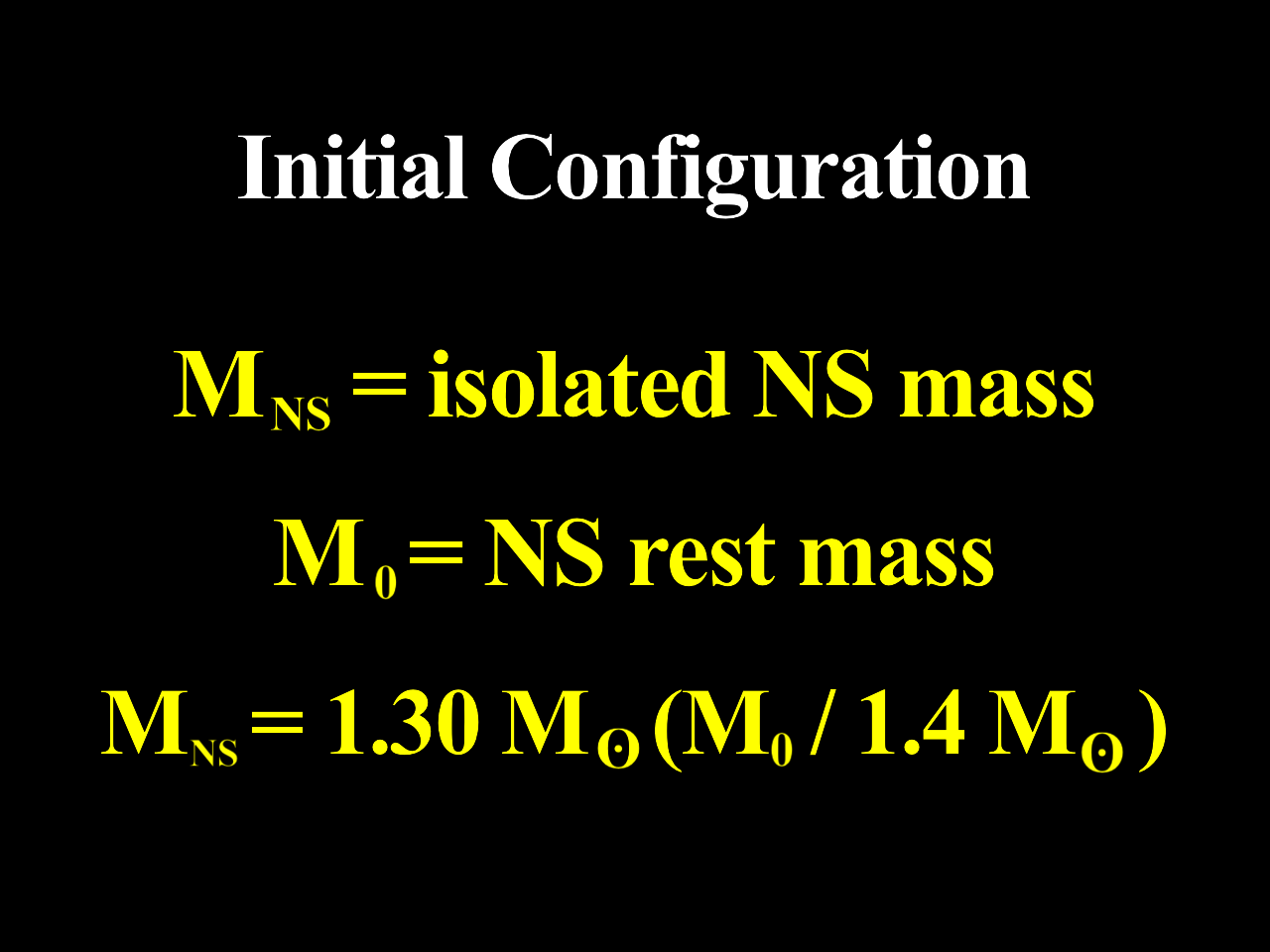 |
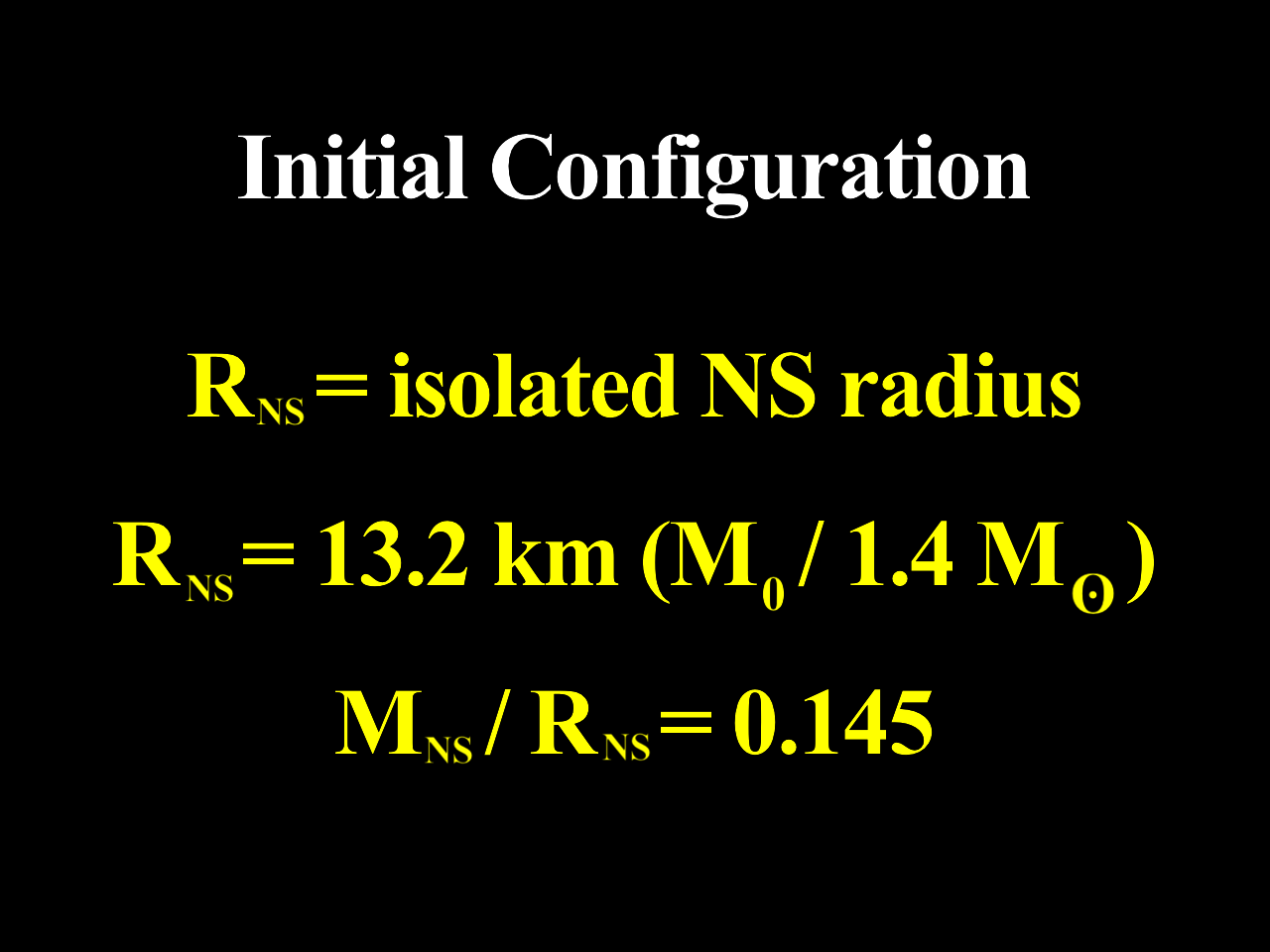 |
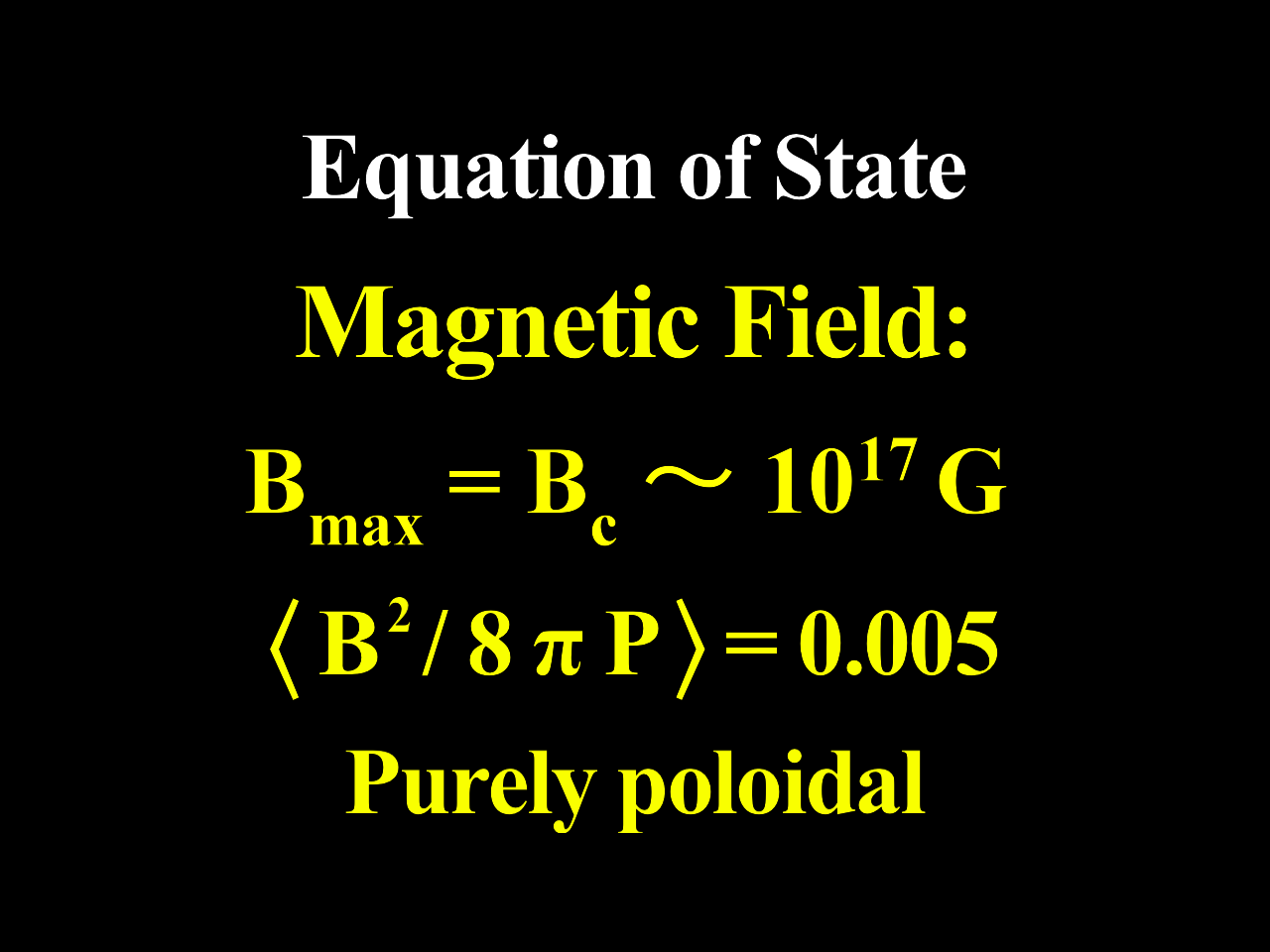 |
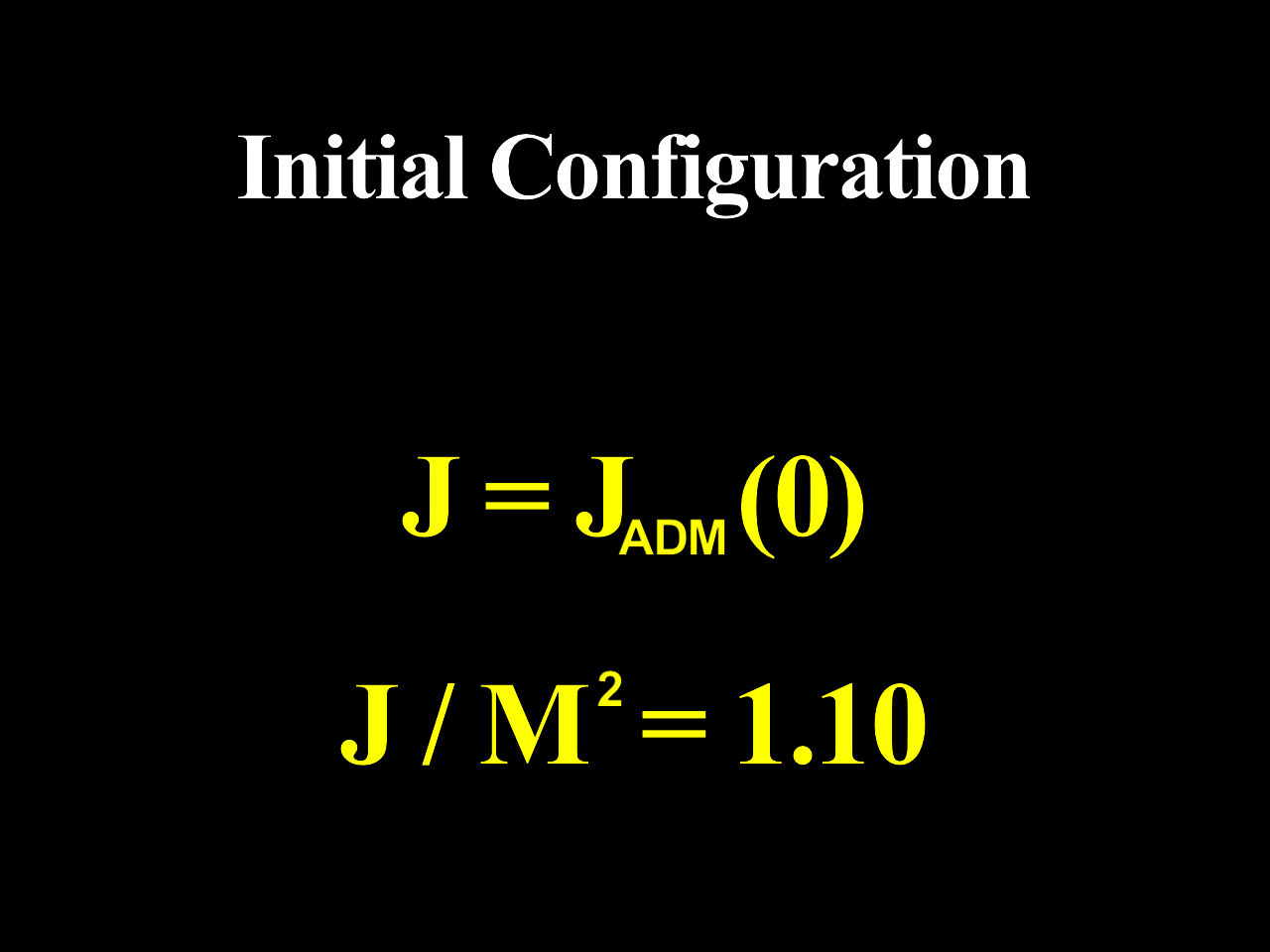 |
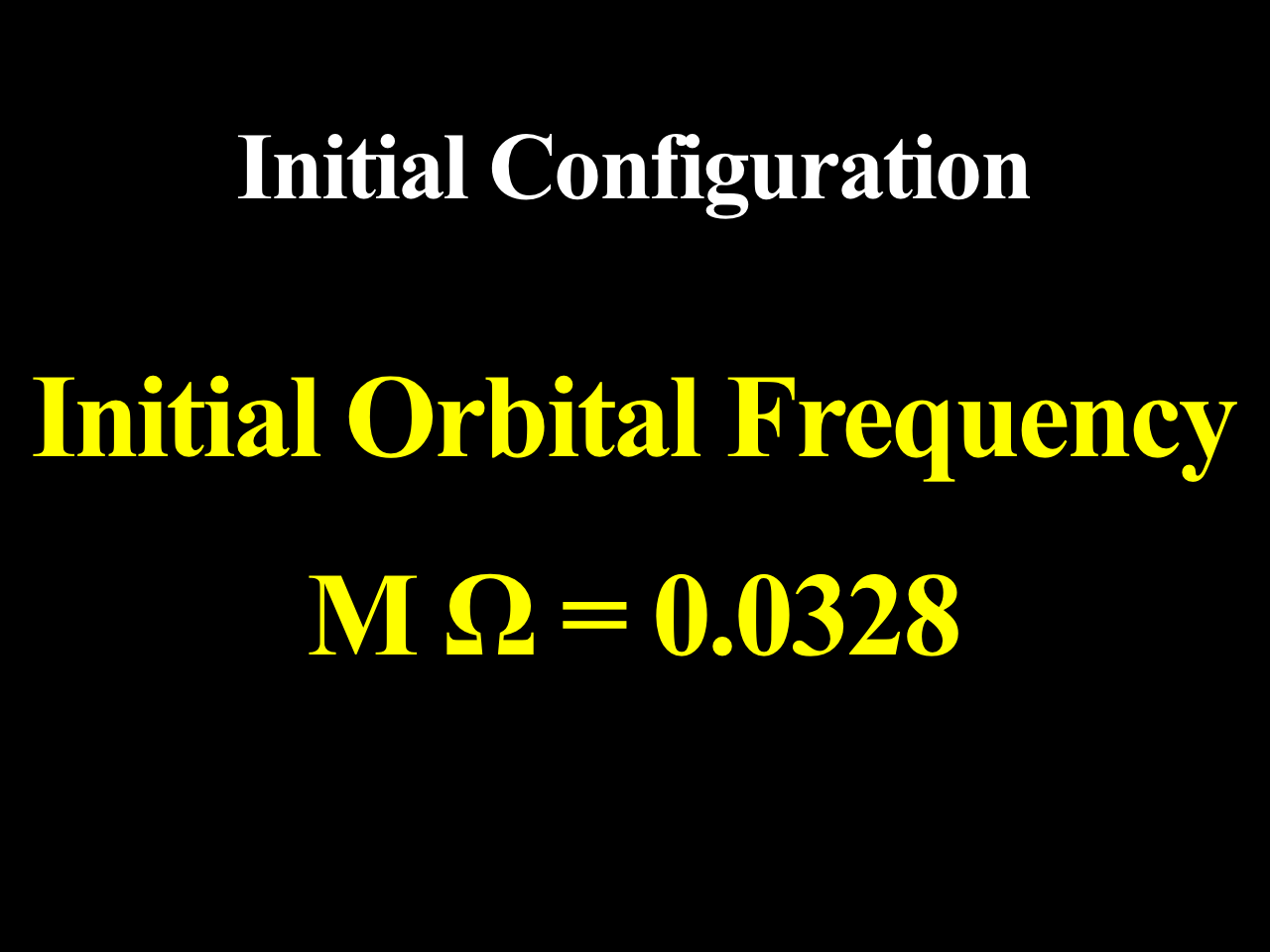 |
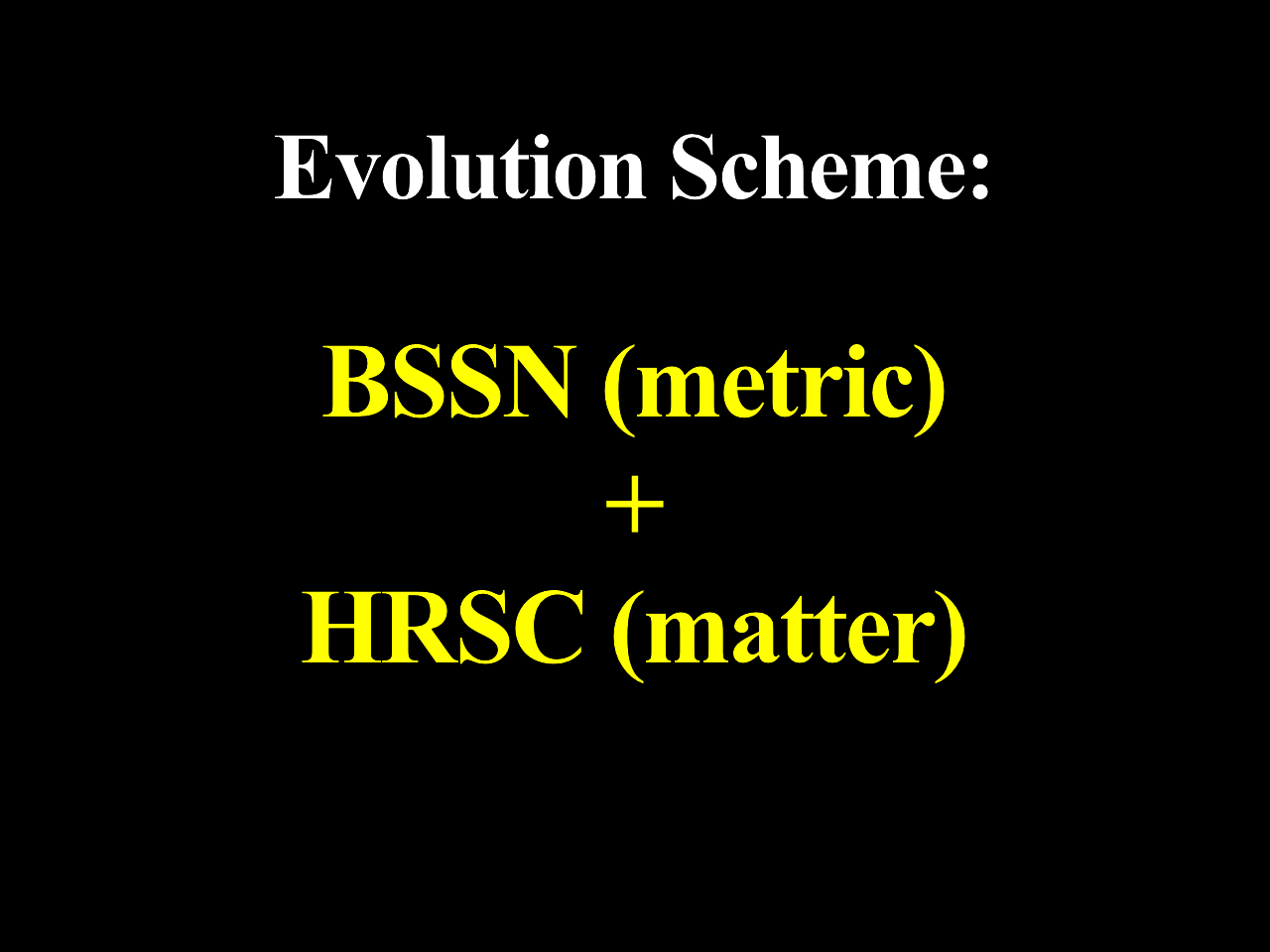 |
The metric (gravitational field) is determined by integrating the Einstein field equations according to the BSSN prescription. The matter and electromagnetic fields are evolved by solving the equations of relativistic hydrodynamics via a high-resolution, shock-capturing (HRSC) scheme.